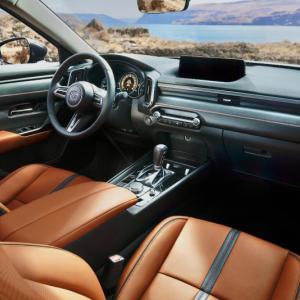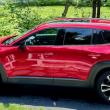Mazda CX-50 2.5 Turbo Premium
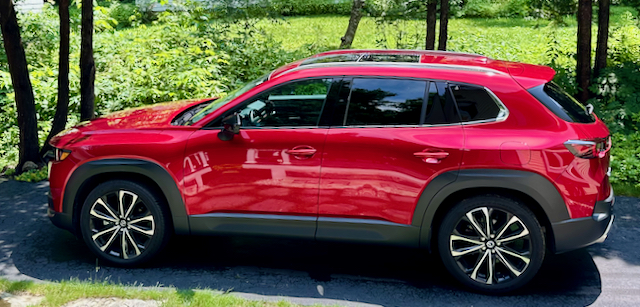 With the new-for-2023 CX-50, Mazda stakes out a spot at the upper end of the two-row SUV market. This color is Red Crystal Metallic.
With the new-for-2023 CX-50, Mazda stakes out a spot at the upper end of the two-row SUV market. This color is Red Crystal Metallic.
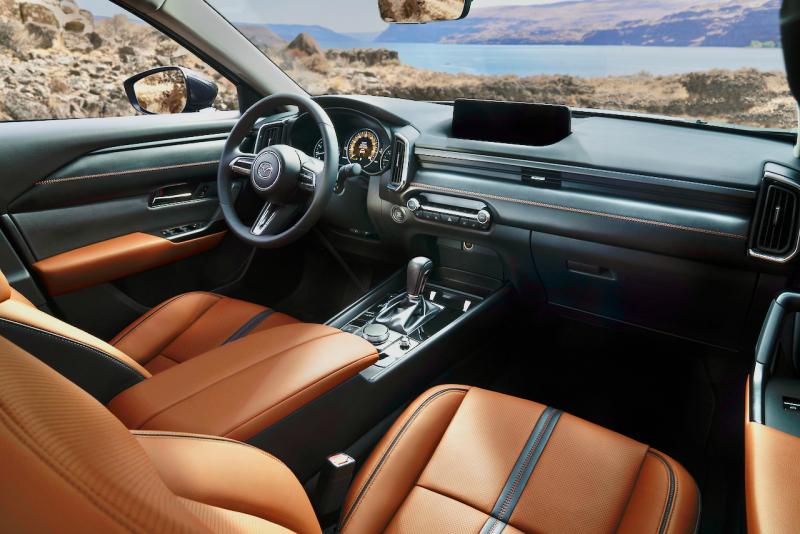 The Terracotta cabin of the CX-50 Turbo Premium Plus is sumptuous and the list of amenities ranges from a power tailgate to radar cruise control by way of lovely leather and infotainment apps such as Apple CarPlay and Android Auto. Base models get much less, including a smaller computer screen.
The Terracotta cabin of the CX-50 Turbo Premium Plus is sumptuous and the list of amenities ranges from a power tailgate to radar cruise control by way of lovely leather and infotainment apps such as Apple CarPlay and Android Auto. Base models get much less, including a smaller computer screen.
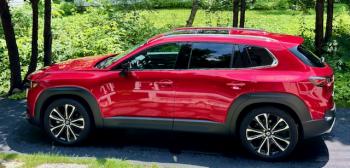 With the new-for-2023 CX-50, Mazda stakes out a spot at the upper end of the two-row SUV market. This color is Red Crystal Metallic.
With the new-for-2023 CX-50, Mazda stakes out a spot at the upper end of the two-row SUV market. This color is Red Crystal Metallic.
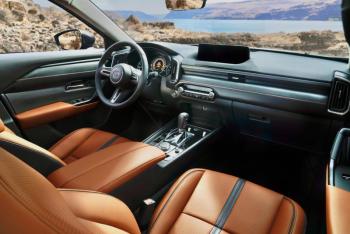 The Terracotta cabin of the CX-50 Turbo Premium Plus is sumptuous and the list of amenities ranges from a power tailgate to radar cruise control by way of lovely leather and infotainment apps such as Apple CarPlay and Android Auto. Base models get much less, including a smaller computer screen.
The Terracotta cabin of the CX-50 Turbo Premium Plus is sumptuous and the list of amenities ranges from a power tailgate to radar cruise control by way of lovely leather and infotainment apps such as Apple CarPlay and Android Auto. Base models get much less, including a smaller computer screen.
If you’re confused about why Mazda offers two compact crossover SUVs with two rows of seats, the CX-5 and the CX-50, you’re not alone. The extra zero in the badge seems to denote a higher level of luxury and possibly a future direction for the company. My guess is that the CX-5’s days are numbered.
The CX-50 is a brand-new-for-2023 model made in Huntsville, Alabama. Although it’s based on the chassis of the subcompact Mazda3 sedan and the CX-30 mini-SUV, it’s slightly larger than its CX-5 stablemate. It is also more modern-looking and, at least in the upper half of the range, better equipped. Pricier, too. Being a Mazda, it’s also rewarding to drive—on a mountain road or the interstate—without giving up any comfort.
Two powerplants are available in the CX-50: a standard 2.5-litre Four good for 187 horsepower or a version of that engine turbocharged to 227 horses and a commendable 310 pound-feet of torque. This is the engine in our vehicle, and it feels almost electric in its acceleration off the line. (For you EV naysayers: This is a compliment.) The transmission is a 6-speed automatic with shift paddles. All-wheel drive is standard across the CX-50 line.
We’ve come to expect superior driving dynamics from Mazda, so the real news from the CX-50 is likely its upmarket interior and fitments. This segment of the car market—compact crossover sport-utes—is white-hot with competition, and the CX-50 seems aimed directly at strong sellers from Kia, Hyundai, Honda, VW, Toyota et al., and it even infringes on Audi and Volvo territory.
Comparison shoppers are spoiled for choice with the CX-50—no fewer than 10 trim levels are available, from the base 2.5 S at just under $30,000 to the deluxe Turbo Premium Plus that we’re driving, with a sticker price of $44,170. Our example is a 2023 model. For 2024, Mazda says it has slightly improved the CX-50’s steering and suspension, bumped up the power to 256 horses and sprinkled a few of the upper-end options further down the lineup; otherwise, the vehicle is unchanged.
As carmakers go, Mazda has always seemed to me to be a bit of an odd duck—a Saab analog, maybe, if you remember that late, lamented Swedish brand that also went its own way. (Until General Motors acquired it and then killed it off.) Here Mazda seems to be following the market rather than leading it, but the CX-50 does this well and stylishly.
Next week: Another Mazda, the CX-30


